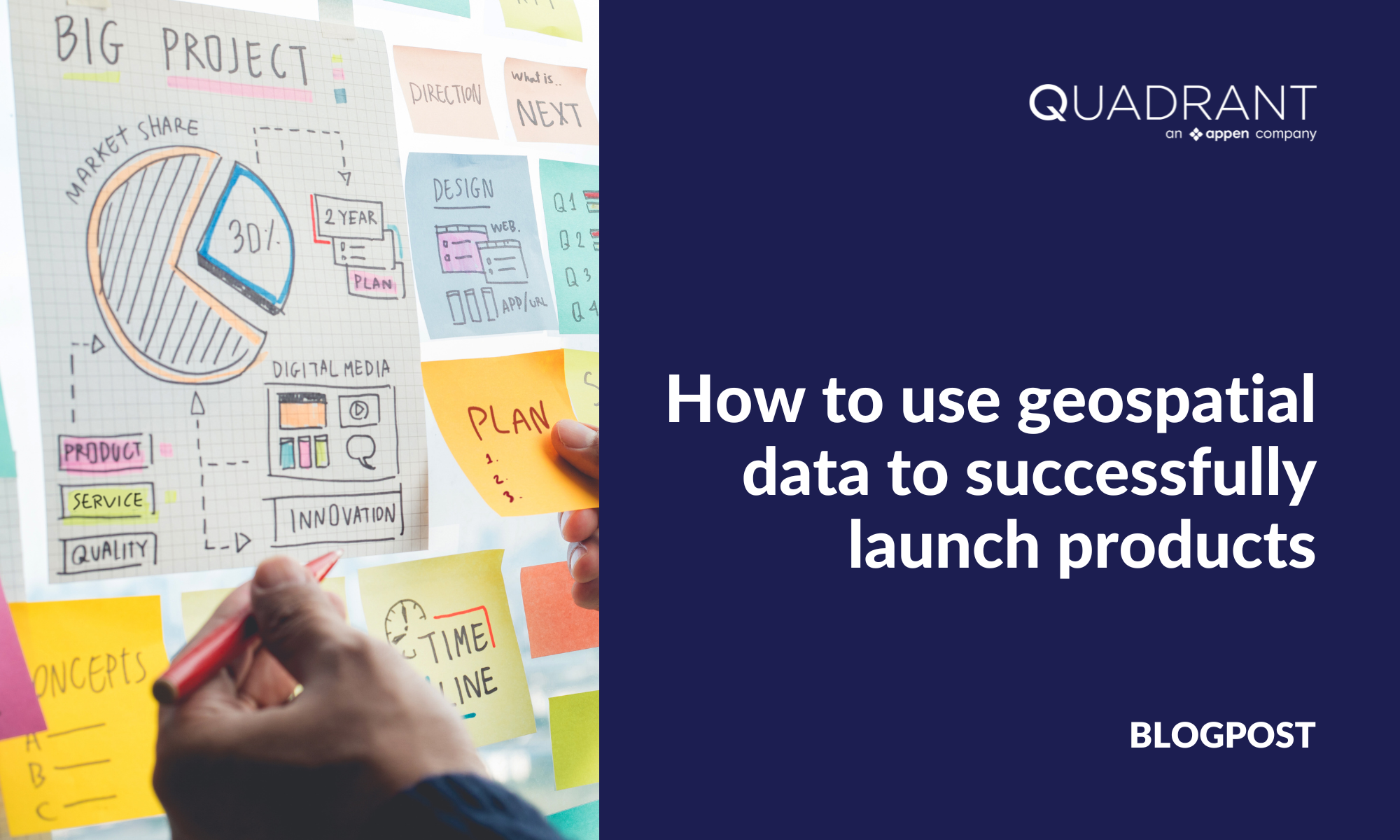Releasing a new consumer-facing physical product is difficult. In today’s hyper-competitive landscape, only companies that execute a data-driven marketing strategy during a product’s pre-launch, launch, and post-launch phases can expect to hit or even exceed – their goals. In this article, we elaborate on how businesses can leverage mobile location and Point-of-Interest (POI) data to make marketing initiatives across these three critical timeframes more effective. 
Identifying relevant audiences
The first step of a product launch plan is to identify buyers. Stated differently, companies need to have an answer to a simple question: what kind of consumers would be willing to purchase this new product?
During the product development phase, businesses identify some key behavioural characteristics of the target audience by utilising market research. Geospatial intelligence allows them to proceed to the next stage, which is to determine which consumers – within a region of interest – conform to these behavioural traits.
Evaluating people’s movement is a great way to determine their hobbies, interests, and preferences. As such, analysing mobility data between different POIs allows businesses to determine the behaviours of individuals – quickly and at scale. These insights allow firms to determine whether a particular area contains a significant number of consumers who match their target audience.
Customer-centric messaging is crucial across all phases of a product launch. Businesses can utilise behavioural insights on prospects to create accurate consumer profiles. Afterwards, they can use these profiles to personalise their messaging so that their marketing initiatives resonate better with existing customers and are more effective at reeling in prospects.
Identifying suitable markets
After identifying relevant audiences, businesses need to select locations that are ideal for selling their new product or product line. To do this, they need to gauge local competition and identify areas that their target audience visits frequently.
Geospatial intelligence is a very powerful tool for these purposes.
Analysing POI saturation in different regions of interest gives businesses a comprehensive overview of local competition. Additionally, mobility and visitation analyses allow firms to evaluate where prospects go most often and where they spend the most time. Together, insights from geospatial analyses give companies the ability to choose sites that are the best suited to carry their new product!
Executing targeted campaigns
The next step is to maximise a product’s exposure across its launch cycle through targeted marketing. Geospatial data is immensely useful here as well – whether you opt for online or offline marketing channels.
Businesses can use location data to build geofences around their retail outlets and send mobile ads to target customers who are near their stores. This is a great way for companies to raise awareness about their product launch and drive consumers to their nearby stores to learn more. Additionally, it is also effective for driving foot-traffic towards their outlets during the launch and post-launch stages.
Firms can utilise location data to evaluate the distribution and concentration of their consumer profiles across a region of interest. They can also identify POIs that are most frequented by these individuals. Armed with such knowledge, businesses are well-informed about which Out-of-Home (OOH) advertisements to select to maximise relevant exposure during the various phases of a product launch.
Poaching customers and prospects from competitors
It is worthwhile for businesses to target their competitors’ customers and prospects – people who have a demonstrated need for their products. This is a beneficial strategy at any stage of the product launch plan.
By using mobile location data, firms can engage people who visit their competitors’ outlets (or pass by their OOH ads) through mobile advertisements. This strategy allows them to redirect a rival’s customers and prospects towards their stores, website, and distributors (granted they highlight their unique selling point). It is also much cheaper for companies as compared to renting outdoor media assets themselves.
To learn about this and other marketing use cases in detail, download our customer success story.
Measuring launch performance
By establishing a baseline for footfall experienced during pre-launch periods and comparing it with foot traffic witnessed following a product’s release, companies can gauge consumer interest in new offerings.
Additionally, firms can conduct visitation analyses for their prior product launches and similar releases from their competitors to develop valuable insights.
For example: If stores received more visits during certain periods in the launch cycle, it could be indicative of more effective messaging, promotion channels etc. employed during those timeframes. Businesses can investigate such theories and use their insights to replicate or reproduce successful initiatives in future launches.
Executing an effective marketing strategy for a product launch can be daunting, but it does not have to be. By utilising human mobility data in conjunction with POI data, businesses can improve all aspects of their marketing approach during the three stages of a product launch. As a result, they can increase the likelihood of successful product releases and increase their revenues.




